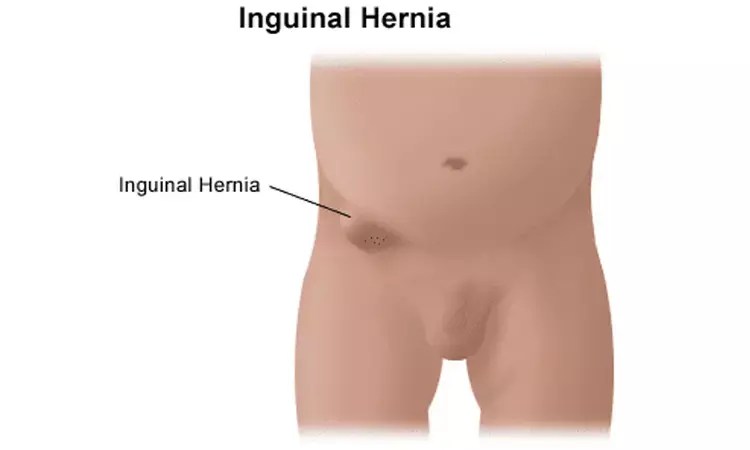- Home
- Medical news & Guidelines
- Anesthesiology
- Cardiology and CTVS
- Critical Care
- Dentistry
- Dermatology
- Diabetes and Endocrinology
- ENT
- Gastroenterology
- Medicine
- Nephrology
- Neurology
- Obstretics-Gynaecology
- Oncology
- Ophthalmology
- Orthopaedics
- Pediatrics-Neonatology
- Psychiatry
- Pulmonology
- Radiology
- Surgery
- Urology
- Laboratory Medicine
- Diet
- Nursing
- Paramedical
- Physiotherapy
- Health news
- Fact Check
- Bone Health Fact Check
- Brain Health Fact Check
- Cancer Related Fact Check
- Child Care Fact Check
- Dental and oral health fact check
- Diabetes and metabolic health fact check
- Diet and Nutrition Fact Check
- Eye and ENT Care Fact Check
- Fitness fact check
- Gut health fact check
- Heart health fact check
- Kidney health fact check
- Medical education fact check
- Men's health fact check
- Respiratory fact check
- Skin and hair care fact check
- Vaccine and Immunization fact check
- Women's health fact check
- AYUSH
- State News
- Andaman and Nicobar Islands
- Andhra Pradesh
- Arunachal Pradesh
- Assam
- Bihar
- Chandigarh
- Chattisgarh
- Dadra and Nagar Haveli
- Daman and Diu
- Delhi
- Goa
- Gujarat
- Haryana
- Himachal Pradesh
- Jammu & Kashmir
- Jharkhand
- Karnataka
- Kerala
- Ladakh
- Lakshadweep
- Madhya Pradesh
- Maharashtra
- Manipur
- Meghalaya
- Mizoram
- Nagaland
- Odisha
- Puducherry
- Punjab
- Rajasthan
- Sikkim
- Tamil Nadu
- Telangana
- Tripura
- Uttar Pradesh
- Uttrakhand
- West Bengal
- Medical Education
- Industry
Glue-based mesh fixation bests mechanical fixation for postoperative inguinal pain: Study

In a recent research report, it has been highlighted that Glue-based mesh fixation appears to reduce the incidence of chronic postoperative inguinal pain (CPIP) and haematoma after LIHR compared with mechanical fixation, with comparable recurrence rates. The findings have been published in British Journal of Surgery.
Mesh fixation in laparoscopic inguinal hernia repair (LIHR) remains highly debated, being largely influenced by individual-surgeon preferences. Non-penetrative methods of mesh fixation using tissue glue have been used for LIHR, and been associated with improved postoperative and chronic pain. Two meta-analyses conducted up to 2011 and 2013, both including five RCTs, demonstrated a significantly reduced risk of chronic pain with no increase in recurrence rate with use of fibrin glue versus penetrative fixation in LIHR. A systematic review comparing fibrin glue and cyanoacrylate showed no difference between glue subtypes in recurrence rates or postoperative complications.
The optimal choice for mesh fixation in laparoscopic inguinal hernia repair (LIHR) has not been well established. This review compared the effects of glue versus mechanical mesh fixation in LIHR on incidence of chronic postoperative inguinal pain (CPIP) and other secondary outcomes, including acute pain, seroma, haematoma, hernia recurrence and other postoperative complications.
Regarding the study design,a systematic review of English/non-English studies using MEDLINE, the Cochrane Library, OpenGrey, OpenThesis and Web of Science, and searching bibliographies of included studies was completed. Only RCTs comparing mechanical with glue-based fixation in adult patients (aged over 18 years) that examined CPIP were included. Two authors independently completed risk-of-bias assessment and data extraction against predefined data fields. All pooled analyses were computed using a random-effects model.
The primary outcome measure was CPIP, defined as pain or discomfort lasting 3 months as defined by European Hernia Society (EHS) guidelines. Secondary outcome measures included recurrence rates, postoperative haematoma and seroma formation, acute pain, and quality of life (QoL).
Data analysis revealed the following facts.
- Fifteen RCTs met the inclusion criteria; 2777 hernias among 2109 patients were assessed.
- The incidence of CPIP was reduced with use of glue-based fixation (risk ratio (RR) 0.36, 95 per cent c.i. 0.19 to 0.69; P = 0.002), with moderate heterogeneity that disappeared with sensitivity analysis (8 d.f.) for patient-blinded studies (RR 0.43, 0.27 to 0.86).
- Trial sequential analysis provided evidence for a relative risk reduction of at least 25 per cent.
- The incidence of haeamtoma was reduced by using glue-based fixation (RR 0.29, 0.10 to 0.82; P = 0.02) with no significant effects on seroma formation or hernia recurrence (RR 1.07, 0.46 to 2.47; P = 0.88).
For the full article follow the link: https://doi.org/10.1093/bjs/znaa002
Primary source: British Journal of Surgery
Dr Satabdi Saha (BDS, MDS) is a practicing pediatric dentist with a keen interest in new medical researches and updates. She has completed her BDS from North Bengal Dental College ,Darjeeling. Then she went on to secure an ALL INDIA NEET PG rank and completed her MDS from the first dental college in the country – Dr R. Ahmed Dental College and Hospital. She is currently attached to The Marwari Relief Society Hospital as a consultant along with private practice of 2 years. She has published scientific papers in national and international journals. Her strong passion of sharing knowledge with the medical fraternity has motivated her to be a part of Medical Dialogues.
Dr Kamal Kant Kohli-MBBS, DTCD- a chest specialist with more than 30 years of practice and a flair for writing clinical articles, Dr Kamal Kant Kohli joined Medical Dialogues as a Chief Editor of Medical News. Besides writing articles, as an editor, he proofreads and verifies all the medical content published on Medical Dialogues including those coming from journals, studies,medical conferences,guidelines etc. Email: drkohli@medicaldialogues.in. Contact no. 011-43720751


